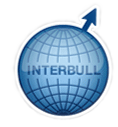|
Size: 3496
Comment:
|
Size: 4473
Comment:
|
| Deletions are marked like this. | Additions are marked like this. |
| Line 33: | Line 33: |
This new weight, resulting from Equation '''(4)''', will be added to the trait-group files according to the revised format and sent to Interbull. '''References''' Fikse, W.F. and Banos, G., 1999. Weighting factors of daughter information in international genetic evaluation for milk production traits: effect on (co)variance components. J. Dairy Sci., 82 (suppl. 1): 72 (Abstr.).Fikse, W.F. and Banos, G., 1999. Weighting factors in international genetic evaluations: effects on international breeding value and reliability estimates. Interbull Bulletin, 22: 38 - 43.Fikse, W.F. and Banos, G., 2001. Weighting factors of sire daughter information in international genetic evaluations. J. Dairy Sci. 84:1759-1767.VanRaden, P.M. and Wiggans, G.R., 1991. Derivation, calculation, and use of national animal model information. J. Dairy Sci., 74: 2737 - 2746.VanVleck, L.D., 1993. Selection index and introduction to mixed model methods. pp 481. CRC Press Inc., Boca Raton, FL. |
Weighting factors for the international genetic evaluation
The following is a procedure to compute new weighting factors for the international genetic evaluation of Interbull, and has to be implemented separately by each individual organisation participating in Interbull evaluations. The procedure is based on information used in the national genetic evaluation in each country, and how a country considers such information depends on the genetic evaluation model.
The procedure consists of two steps. In the first step, for each animal with own performance records used in the national genetic evaluation, the reliability due to its own performance, R(o), is estimated using selection index methodology. R(o) is computed separately per trait (milk, fat or protein yield) and information from the other traits in a multiple trait national genetic evaluation is ignored. The second step combines the R(o) from the daughter and her dam, expressed in effective daughter contributions (EDC), which are subsequently accumulated over all daughters of a sire.
Step 1: Estimation of reliability based on own performance (R(o)):
For each animal with own performance records in the national genetic evaluation, Ri(o) is estimated. Estimation of Ri(o) depends on the genetic evaluation model.
a) Single trait (repeatability) model for the national genetic evaluation (where individual lactations are considered as the same trait):
b) Multiple trait model for the genetic evaluation (where each lactation, part of lactation or test day observation are treated as different traits):
Let k’EBV be the estimated breeding value or transmitting ability of the bull for the trait of interest (milk, fat or protein yield), i.e. the one submitted in the 010 file to Interbull, where EBV is a vector with multiple trait (lactation, part-lactation, test day) estimates of breeding value or transmitting ability, and k a vector with weights given to each estimate.
Note:
- heritability is the heritability of a single observation, e.g. test day yield - non-genetic parameters correspond to all non-genetic effects, which may include permanent environment effects ( i.e. E = PE + e )
- the non-genetic correlation depends on assumptions of the evaluation model, i.e. whether PE and/or e are considered to be correlated between lactations
- in case genetic and environmental correlations and heritability are not constant over lactation (e.g. in random regression models), an average value over lactation should be used
for missing traits, computation of the nominator in (2) can be done in two ways:1) set the rows and columns corresponding to the missing trait to zero in the P matrix, or 2) remove the corresponding rows and columns in the P matrix and the corresponding rows in the G matrix. Either way should give the same results. However, the first method is recommended since it is less ambiguous (i.e. the G matrix is not affected and the P matrix is of same dimension under all circumstances). The denominator in (2) is the same for all animals, whether observations are missing or not!
Step 2: Combine sources of information
a) Once Ri(o) is computed for all animals with own records in the genetic evaluation, information from the cow and her dam is combined as follows:
This new weight, resulting from Equation (4), will be added to the trait-group files according to the revised format and sent to Interbull. References Fikse, W.F. and Banos, G., 1999. Weighting factors of daughter information in international genetic evaluation for milk production traits: effect on (co)variance components. J. Dairy Sci., 82 (suppl. 1): 72 (Abstr.).Fikse, W.F. and Banos, G., 1999. Weighting factors in international genetic evaluations: effects on international breeding value and reliability estimates. Interbull Bulletin, 22: 38 - 43.Fikse, W.F. and Banos, G., 2001. Weighting factors of sire daughter information in international genetic evaluations. J. Dairy Sci. 84:1759-1767.VanRaden, P.M. and Wiggans, G.R., 1991. Derivation, calculation, and use of national animal model information. J. Dairy Sci., 74: 2737 - 2746.VanVleck, L.D., 1993. Selection index and introduction to mixed model methods. pp 481. CRC Press Inc., Boca Raton, FL.
